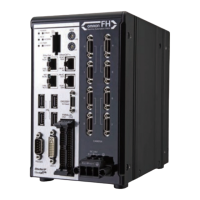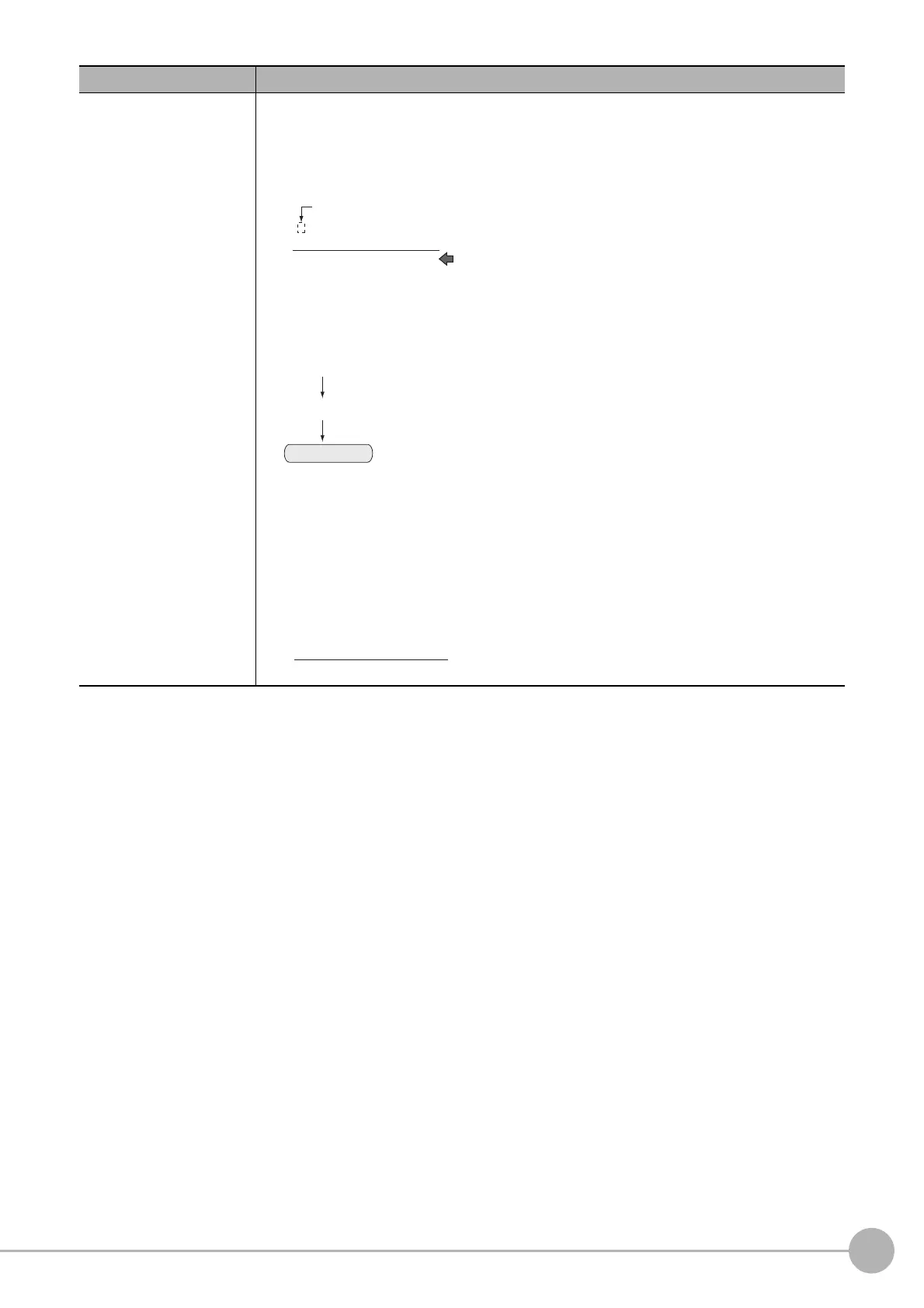WWW.NNC.IR
5
Vision System FH/FZ5 Series
User’s Manual (Z340)
2's complement
Binary numbers are generally used to represent negative numbers.
Negative numbers are expressed by "Inverting all bits of a positive number and adding 1 to the
result".
(Example) "−1" is expressed as 2's complement
"−1" can be calculated by "0-1".
There are methods for simple calculation without performing this kind of computation.
For instance, "Negative number = inverting all bits of a positive number and then adding 1 to
the result".
The first digit is used to judge whether the number is positive or negative.
• When 0: Positive number (or 0)
• When 1: Negative number
The advantage of two's complement numbers is that positive and negative numbers can be
used as is in calculations.
(Example) When −1+10=9
Term Definition
−“1” is expresses with 2’s Complement (for 8 bits)
00000000 (= 0)
−
)
(In the case of 1, minus 1)
00000001 (= 1)
11111111 (=−1)
00000001 (= 1)
11111110
11111111 (=−1)
Invert all bits
Plus 1
1
1111111 (= −1)
00001001 (= 9)
+)00001010 (= 10)

